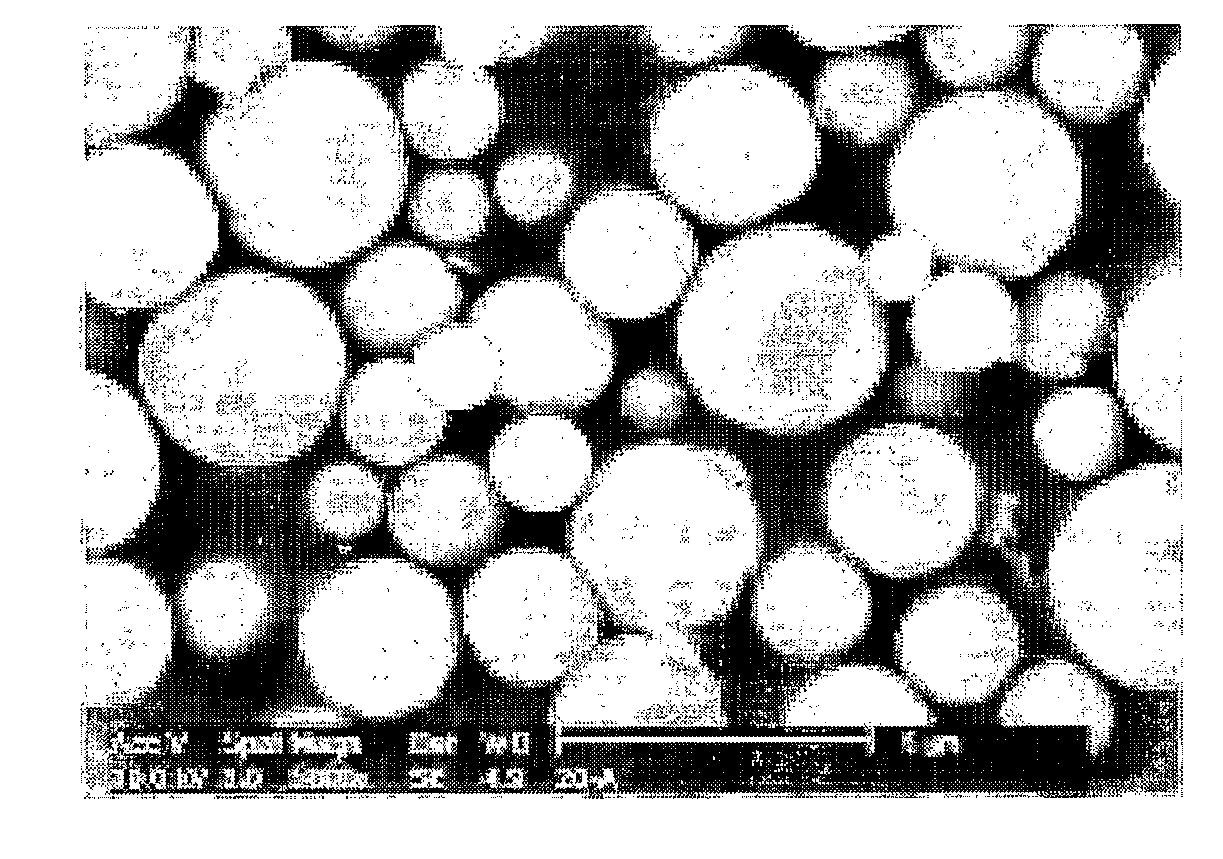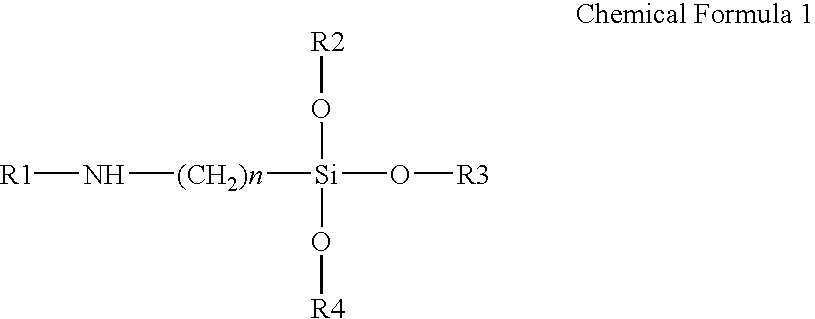Poly(Silsesquioxane) Spherical Particle Containing Ultraviolet Light-Absorbing Group and Manufacturing Method Thereof
a technology of ultraviolet light and spherical particles, which is applied in the direction of organic chemistry, emergency protective arrangements for limiting excess voltage/current, chemical instruments and processes, etc., can solve the problems of skin cancer, side effects, and negative effects of ultraviolet ligh
- Summary
- Abstract
- Description
- Claims
- Application Information
AI Technical Summary
Benefits of technology
Problems solved by technology
Method used
Image
Examples
example 1
(i) Preparation of a Silsesquioxane Precursor Containing a UV-Absorbing Group
[0040] N-trimethoxysilylpropyl-p-methoxycinnamamide was prepared, as shown by a following Chemical Formula 2.
[0041] 30 g of p-methoxycinnamic acid and 35.1 g of dicyclohexylcarbodiimide were added to a 1 L round 3-necked flask equipped with a dropping funnel and a cooler, 600 mL of toluene newly distilled from sodium ketyl was added thereto, and the resultant mixture was refluxed to yield a homogeneous solution. After about 30 minutes, 37.5 g of 3-aminopropyltrimethoxysilane was dropped over 30 minutes through the dropping funnel. The resultant reaction mixture was refluxed for 4 hours, and then toluene was removed by vacuum distillation without contacting with moisture. Dicyclohexyl urea formed in a remaining solution was removed by filtration to yield a product. The resultant product was determined using FT-IR and thin layer chromatography (TLC). Yield of the resultant product is about 40 g.
(ii) Prepa...
example 2
(i) Preparation of a Silsesquioxane Precursor Containing a UV-Absorbing Group
[0043] The silsesquioxane precursor containing the UV-absorbing group, or example trimethoxysilylpropylbenzamide was prepared, as shown by a following Chemical Formula 3.
[0044] 7.8 g of benzoyl chloride and 50 mL of toluene dried in sodium ketyl and distilled just before its use were added to a 250 mL 3-necked flask equipped with a dropping funnel, and a mixture of 10 g of 3-aminopropyltrimethoxysilane and 7.8 g of triethylamine was dropped over 20 minutes with stirring. About 18 hours after dropping was completed, the mixture was filtered, the precipitate was removed, and toluene was vacuum distilled out to yield a product. A purity of the resultant product was roughly determined using FT-IR (Bomem MB 104) and silica-coated thin layer chromatography. From a result of thin layer chromatography, it was confirmed that the resultant product mainly comprise one main product, and amide is formed around a 1,70...
example 3
(i) Preparation of a Silsesquioxane Precursor Containing a UV-Absorbing Group
[0046] The silsesquioxane precursor containing the UV-absorbing group, for example trimethoxysilylpropylcinnamamide was prepared, as shown by a following Chemical Formula 4.
[0047] 40 g of cinnamic acid and 50 g of dicyclohexylcarbodiimide were added to a 1 L round 3-necked flask equipped with a dropping funnel and a cooler, and also 600 mL of toluene newly distilled from sodium ketyl was added thereto, and the resultant mixture was refluxed to yield a homogeneous solution. After about 30 minutes, 48 g of 3-aminopropyltrimethoxysilane was dropped over 30 minutes through the dropping funnel. The resultant reaction mixture was refluxed for 4 hours, and then toluene was removed by vacuum distillation without contacting with moisture. Dicyclohexyl urea formed in a remaining solution was removed by filtration to yield a product. The resultant product was determined using FT-IR and thin layer chromatography. Yi...
PUM
| Property | Measurement | Unit |
|---|---|---|
| Light | aaaaa | aaaaa |
| Physical properties | aaaaa | aaaaa |
Abstract
Description
Claims
Application Information
 Login to View More
Login to View More - R&D
- Intellectual Property
- Life Sciences
- Materials
- Tech Scout
- Unparalleled Data Quality
- Higher Quality Content
- 60% Fewer Hallucinations
Browse by: Latest US Patents, China's latest patents, Technical Efficacy Thesaurus, Application Domain, Technology Topic, Popular Technical Reports.
© 2025 PatSnap. All rights reserved.Legal|Privacy policy|Modern Slavery Act Transparency Statement|Sitemap|About US| Contact US: help@patsnap.com



